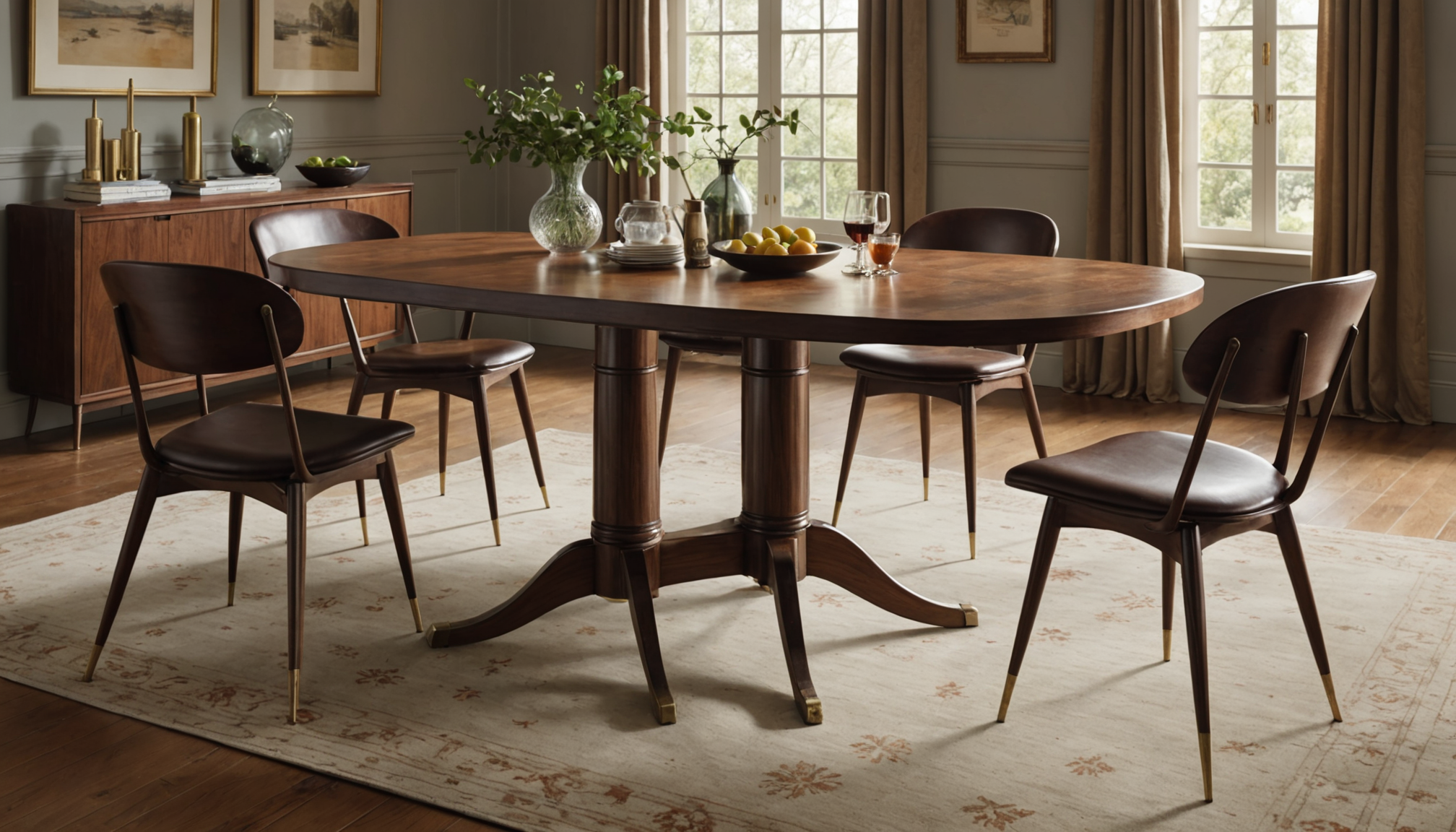Understanding when to repair or replace your furniture begins with a thorough assessment of its current condition. An accurate evaluation helps you make informed decisions, ensuring your investments are worthwhile. Start by examining the structural integrity of the piece. Furniture that feels wobbly or reveals visible damage, such as cracks or missing parts, may require immediate attention. Check the joints and connectors for signs of wear and tear, as these are critical to the furniture’s stability and longevity.
Next, consider the material and surface condition. Wooden furniture, for example, can suffer from scratches, dents, or finish fading over time. Fabric-covered items might have stains, tears, or worn patches, whereas leather can crack, peel, or discolor. Look out for pest damage, like wood-boring insects or rodents, which can be harder to detect but equally compromising to the furniture’s durability.
It’s also important to assess functionality. Furniture pieces that no longer serve their intended purpose, such as drawers that stick or tables with uneven surfaces, may not be worth repairing unless the issues are minor and easily remedied. Consider whether the design of the furniture continues to meet your needs. A couch or chair that is uncomfortable or outdated in style may prompt reconsideration of its place in your home.
Keep an eye out for potential safety hazards. Broken glass, protruding nails, or sharp edges pose risks, especially in homes with young children or pets. Addressing these issues promptly ensures a safe living environment.
When assessing your furniture, it can be helpful to create a comparison table. This tool allows you to systematically evaluate each piece, considering factors that impact the decision to repair or replace.
| Furniture Piece | Structural Issues | Material Condition | Functionality | Safety Concerns |
| Couch | Loose legs | Faded fabric | Uncomfortable seating | None |
| Dining Table | Solid | Scratched surface | Uneven surface | Sharp edges |
| Armchair | Sturdy | Leather peeling | Functional | None |
By conducting a comprehensive assessment, you gain a clear perspective on the condition of each piece. This insight allows you to determine whether a simple repair may extend its life or if replacement is a more practical and cost-effective option. Keep in mind that this evaluation not only guides your decision-making but also helps prioritize actions to maintain a functional and aesthetically pleasing living space.
cost analysis: repair versus replacement
When deciding whether to repair or replace a piece of furniture, a cost analysis is essential. Understanding the financial implications of each option can illuminate the most economical choice for your situation. Here’s a step-by-step guide to conducting a thorough cost analysis:
1. Estimate Repair Costs:
– Research and Quotes: Gather information on potential repair costs by seeking quotes from local repair shops or craftspersons. If you’re considering a DIY approach, calculate the expenses related to materials and tools.
– List Specific Repairs Needed: Break down the repairs by component, like reupholstering a couch versus replacing a broken table leg, to better understand the overall cost.
– Consider Labor Costs: Factor in labor costs if not repairing it yourself. Skilled labor can significantly increase the price depending on the complexity of the repair.
2. Estimate Replacement Costs:
– Price New Furniture: Research the cost of a new piece with similar features and quality. Include delivery fees and any necessary assembly or setup costs.
– Quality and Longevity: Consider the lifespan and quality. Sometimes investing a bit more upfront for a higher-quality piece can yield longer durability and better value.
3. Compare Repair vs. Replacement:
– Total Cost Comparison: List the total estimated cost for repairing your furniture against the estimated cost of purchasing a new piece.
– Consider Value Over Time: If the repair costs are close to the replacement price, think about the potential longevity and how much use you’ll get from the repaired piece versus a new one.
4. Additional Considerations:
– Warranty and Guarantees: New furniture often comes with a warranty, which can save costs on future repairs that may arise. Assess if this is a benefit that outweighs the potentially lower cost of repairing.
– Depreciation: Calculate potential depreciation or resale value. Sometimes newer or brand-name furniture can retain value better than a repaired piece.
5. Factor in Non-Monetary Value:
– Aesthetics and Style: Sometimes the cost isn’t just about money. Choosing the option that better suits your home’s style and your personal taste can carry significant weight.
– Convenience and Time: Consider how quickly you need the furniture. Repairs can take time and multiple visits, while purchasing may offer instant solutions.
By carefully comparing the costs associated with repair and replacement and considering other non-monetary factors, you can make an informed decision that balances your budget with your needs. This approach ensures that your investment reflects both practicality and satisfaction with the final result.
sentimental and aesthetic considerations
When deciding whether to repair or replace furniture, it’s important not to overlook the sentimental and aesthetic value of the piece. Furniture often holds a deeper meaning than its functional or monetary value. An item inherited from a loved one or acquired during a significant life event can carry emotional weight that supersedes other considerations. Sentimental attachment can transform a seemingly simple piece of furniture into a cherished heirloom that is an integral part of your home’s history and your personal narrative.
Aesthetically, certain styles or designs may align perfectly with your space, complementing your home’s interior in a way that is uniquely tailored to your taste. Evaluating the aesthetic value involves considering if the piece contributes to your desired atmosphere or thematic expression within a room. Timeless design, whether through classic craftsmanship or iconic silhouette, may bear significant artistic value, marking it as something worthy of preservation rather than replacement.
Moreover, the age and rarity of a piece can enhance its allure and artistic value. Antique furniture often embodies a level of craftsmanship and detail that is hard to find in contemporary counterparts. The charm of vintage details and hand-crafted elements fosters a distinctive character that newer pieces cannot replicate. If the furniture is part of an antique collection or showcases a specific design era, it might be prudent to repair rather than replace, thereby preserving its historical significance.
Consider the possibility of customization or creative restoration. An old piece that holds sentimental value but no longer fits your aesthetic might be given new life through reupholstering or refinishing. Such adjustments allow the preservation of its emotional significance while updating its look to suit your current style preferences.
Ultimately, when determining the emotional and aesthetic factors, balance is key. A piece that is aesthetically pleasing and deeply personal should be considered in light of its functional potential and structural health. If it’s repairable, its intrinsic value may justify the investment. Therefore, assessing this dimension with care can help ensure that your home remains a reflection of your values, memories, and design philosophy.
sustainability and environmental impact
In today’s world, being mindful of sustainability and minimizing environmental impact is becoming increasingly important, even when it comes to furniture decisions. The choice between repairing and replacing furniture can have significant implications for the environment, and weighing these options carefully can contribute positively to ecological preservation.
Repairing furniture is often the more environmentally friendly option. It reduces waste by preventing items from ending up in landfills, which can take years to decompose and contribute to environmental pollution. Instead of discarding a damaged or outdated piece, opting for repair extends its life. This means less demand for new raw materials and lower overall carbon emissions from manufacturing processes. By restoring existing furniture, you are joining a movement toward a more circular economy, where reuse and longevity take precedence over consumption.
On the other hand, if a piece is beyond repair or maintaining it is not feasible, replacing it with a sustainable, eco-conscious option is essential. When purchasing new furniture, search for pieces made from sustainably sourced materials, such as certified wood, bamboo, or recycled metals and plastics. Additionally, prioritize brands that are transparent about their production practices and are committed to reducing their environmental footprint. Look for certifications such as FSC (Forest Stewardship Council) or Cradle to Cradle, which indicate environmentally responsible practices.
Transitional materials or composite woods often consist of high levels of harmful volatile organic compounds (VOCs) released as the furniture ages, impacting indoor air quality. Opting for natural materials and finishes can ensure a healthier home environment while being gentler on the planet. As you consider new purchases, explore buying from local artisans or secondhand shops. This not only supports local economies but also reduces the carbon emissions associated with transporting goods over long distances.
Additionally, disposing of old furniture responsibly should be part of your sustainability strategy. Consider donating reusable items to charities, offering them to friends or family members, or recycling components where possible. Organizations and recycling centers often accept furniture donations, sparing items from the landfill and benefiting those in need.
By integrating sustainability considerations into your repair or replacement decision-making process, you actively contribute to environmental conservation. Remember that each choice you make can significantly impact the ecosystem, promoting a healthier planet for future generations. Each thoughtful action towards sustainability in furniture decisions embodies a broader commitment to living in harmony with the environment, demonstrating that every small step counts.
expert tips for making the right decision
In making the crucial decision of whether to repair or replace furniture, expert advice can illuminate the path forward, ensuring the decision benefits both your home and lifestyle. First and foremost, seek professional evaluations. Reputable furniture restorers and craftsmen can provide insights into the feasibility of repairs, estimated longevity post-repair, and potential costs involved. Their expertise is invaluable, and they might discover repair possibilities or unexpected issues that are not immediately visible to the untrained eye.
Furthermore, tap into the power of online forums and communities dedicated to furniture restoration and sustainable living. These platforms are treasure troves of user experiences, creative solutions for unique challenges, and innovative transformation projects. Hearing from others who have faced similar dilemmas can offer fresh perspectives and inspire ideas you hadn’t considered.
Consider the future needs and trends in your advice-seeking process. Ask questions that explore whether repairing aligns with longer-term trends in design and functionality, or if replacing would better serve future demands. As lifestyles evolve, so may your home needs; hence, forecasting potential changes in room usage or aesthetic preferences can provide clarity.
Don’t underestimate the impact of trial solutions. Before making a final decision, experiment with minor adjustments or repairs. This hands-on approach can help you gauge your satisfaction with the potential outcome before fully committing to extensive repairs or a new purchase.
In addition, consulting interior designers or furniture consultants, albeit sometimes at a cost, could prove beneficial in giving tailored advice on what aligns best with your personal space and style continuity. Their professional eye can help decide on the best course of action that complements the rest of your decor, linking functionality with aesthetic appeal.
Finally, remember that the most balanced decision stems from weighing practical advice against personal priorities. This consideration ensures that your selection not only serves immediate needs but also aligns with broader values, such as sustainability, aesthetics, and emotional connection. With these expert tips, you can confidently navigate the intricacies of deciding whether to repair or replace, leading to a fulfilling and integrated living space.
In conclusion, the decision to repair or replace furniture involves various critical factors, including costs, sentimental value, environmental impact, and expert opinions. By thoroughly assessing each aspect and prioritizing what matters most to you, it’s possible to make an informed choice that enhances your home while reflecting personal values. Whether you decide to breathe new life into a beloved classic or embrace the opportunity for a fresh start, thoughtful consideration ensures a result that balances aesthetics, budget, and sustainability.


